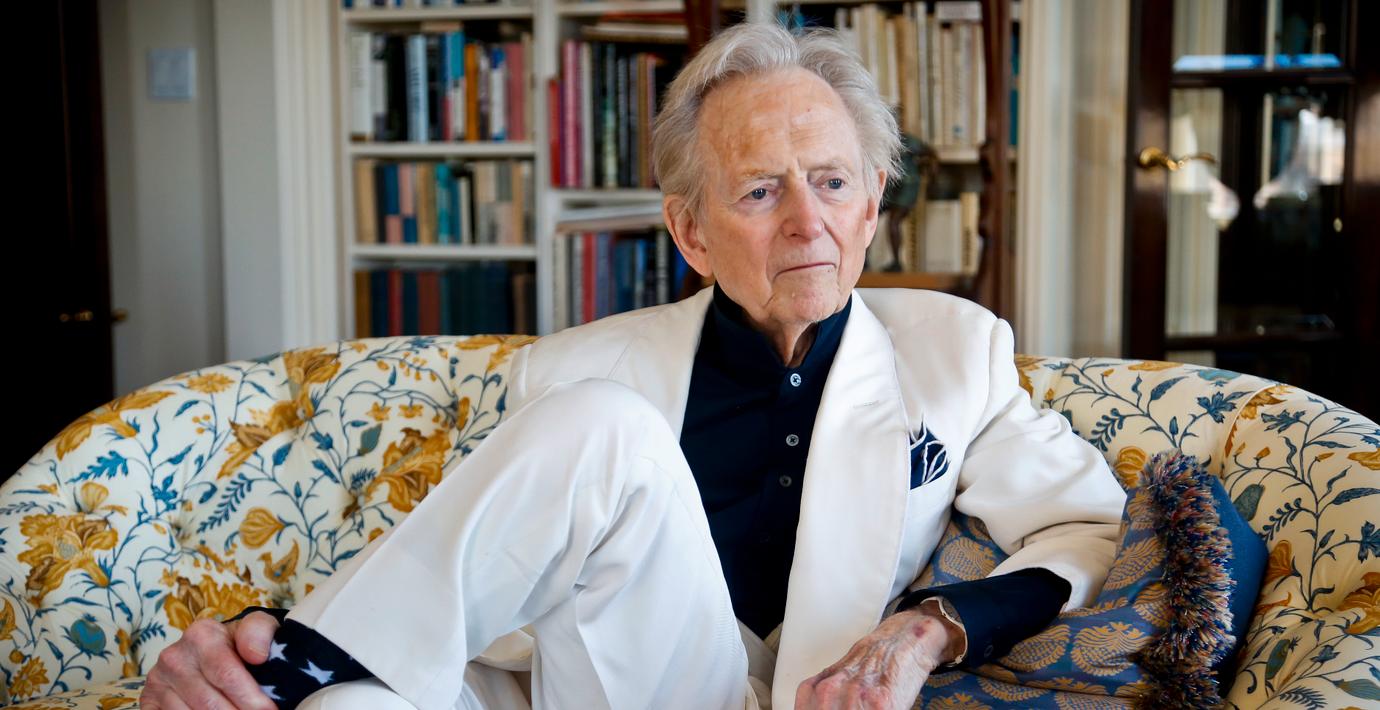
Författaren Tom Wolfe har dött – blev 88 år gammal
Författaren och journalisten Tom Wolfe har dött, 88 år gammal. Det skriver New York Times.
Wolfe var en av medgrundarna till stilen New journalism, som utmanade de journalistiska idealen om objektivitet genom att ge skribenten en viktigare roll i texten och låna litterära grepp från romankonsten.
Han har även skrivit en lång rad böcker, däribland ”Fåfängans fyrverkeri” och ”En riktig man”.
bakgrund
Tom Wolfe
Wikipedia (sv)
Thomas Kennerly "Tom" Wolfe, född 2 mars 1931 i Richmond, Virginia, är en amerikansk journalist och författare. Han har bland annat skrivit Fåfängans fyrverkeri och En riktig man samt är medgrundare till New Journalism.
Han studerade vid Washington and Lee University. År 1956, då han ännu höll på med sin avhandling, blev Wolfe reporter vid Springfield Union i Springfield i Massachusetts. Han slutförde sin avhandling 1957 och erbjöds anställning inom den akademiska världen, men valde att arbeta som journalist. Han anställdes istället av Washington Post 1959.
År 1962 lämnade Wolfe Washington för New York och New York Herald Tribune. År 1965 kom hans debutbok The Kandy-Kolored Tangerine-Flake Streamline Baby (ISBN 0-553-38058-3, ej utgiven på svenska).
bakgrund
New Journalism
Wikipedia (en)
New Journalism is a style of news writing and journalism, developed in the 1960s and 1970s, which uses literary techniques deemed unconventional at the time. It is characterized by a subjective perspective, a literary style reminiscent of long-form non-fiction and emphasizing "truth" over "facts," and intensive reportage in which reporters immersed themselves in the stories as they reported and wrote them. This was in contrast to traditional journalism where the journalist was typically "invisible" and facts are reported as objectively as possible. The phenomenon of New Journalism is generally considered to have ended by the early 1980s.
The term was codified with its current meaning by Tom Wolfe in a 1973 collection of journalism articles he published as The New Journalism, which included works by himself, Truman Capote, Hunter S. Thompson, Norman Mailer, Joan Didion, Terry Southern, Robert Christgau, Gay Talese and others.
Articles in the New Journalism style tended not to be found in newspapers, but rather in magazines such as The Atlantic Monthly, Harper's, CoEvolution Quarterly, Esquire, New York, The New Yorker, Rolling Stone, and for a short while in the early 1970s, Scanlan's Monthly.
Contemporary journalists and writers questioned the "newness" of New Journalism, as well as whether it qualified as a distinct genre. The subjective nature of New Journalism received extensive exploration; one critic suggested the genre's practitioners were functioning more as sociologists or psychoanalysts than as journalists. Criticism has been leveled at numerous individual writers in the genre, as well.
Omni är politiskt obundna och oberoende. Vi strävar efter att ge fler perspektiv på nyheterna. Har du frågor eller synpunkter kring vår rapportering? Kontakta redaktionen